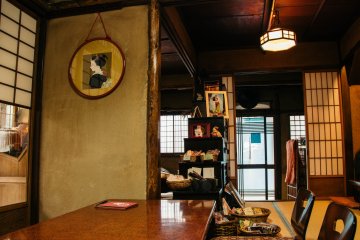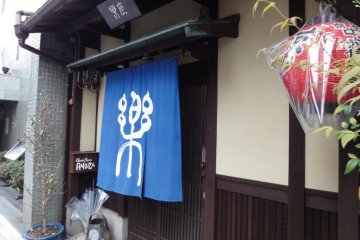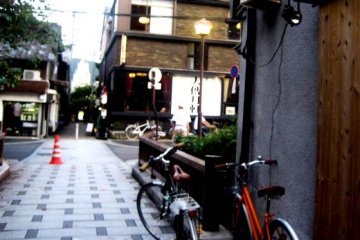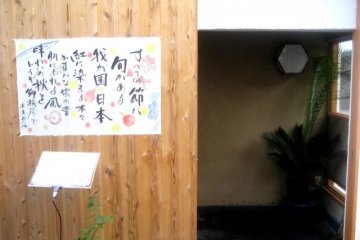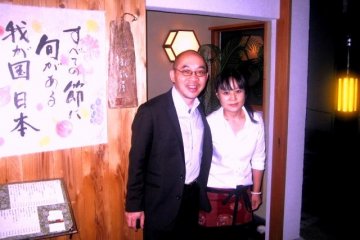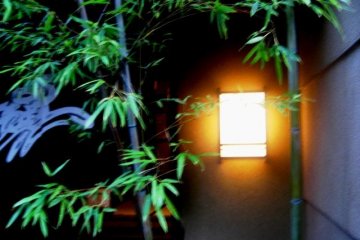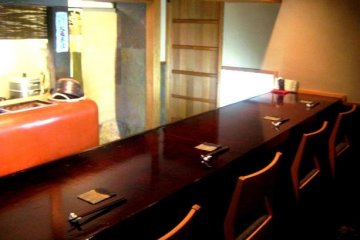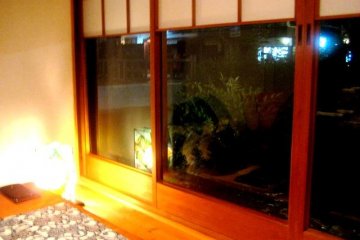Innovation, elegance and refinement are qualities that are synonymous with Kyoto cuisine, qualities that stand out in this intimate eatery on the banks of the Takasegawa.
At Ryoriya Otaya, the chefs not only consider deeply about having the best ingredients and seasonings, they also desire to encapsulate in the whole dining experience, an understated luxury that encompasses everything from art to architecture. There is in everything they do, a delicate tribute to the four seasons, from the plates that reflect the colors of Kyoto, to the soft glow of the lanterns. In the private rooms, the floor to ceiling windows bring the intimate Kiyamachi scenery inside, and you can while the hours away gazing at the petals floating gently downstream under the weeping trees, punctuated by the bento delivery man making his rounds on his bicycle. A meal here is not just about the cuisine, but also an opportunity to enjoy space and time, a way to taste Kyoto in all its charms. The discreet service ensures that the cuisine and dining space take center stage.
On the other hand, enjoy a drink at the counter and sample the cuisine, izakaya style, and engage in the banter of dining, communal style. Feel the dynamism of the cooks in the open kitchen and meet a new friend on the communal dining table. The chef’s philosophy with his dishes is, "it makes me think of you". Ask him about the old style charcoal rice oven next to the counter, one that was used in the Meiji period a hundred years ago.
Some of the special dishes he features include a Tosa vinegar jelly appetizer, an assiette of twenty vegetables, Oyster egg custard soup, and grilled Spanish mackerel served in hermitage pottery
Tonight I am treated to one of Taro Yamamoto’s favorite eateries in Kiyamachi. A Nihonga artist whose works are exhibited at Imura Gallery, Takashimaya and whose style celebrates both contemporary and Rinpa, the Otaya is a fitting choice. This is not the kind of place featured in travel guides, but somewhere sophisticated Kyoto-ites go to relax and be inspired by immaculate cuisine and hospitality.
The simple Kyoto fare here is transformed by the intelligent addition of an unexpected ingredient. For example, the cold somen noodles with tomato, roe and herbs, usually a light dish for the hot summer months, is given gravitas by the infusion of sesame oil, one that is totally unexpected (it helps that I wasn’t studying the Japanese language menu beforehand) while retaining a slightly delicate texture of the noodles and the refreshing tanginess of the tomatoes. Having this course just after summer ended in September may be a way for this chef to evoke the feeling of nagori, the Japanese term for nostalgia from the yearning of a passing season. It almost reminds me of the Portuguese word “Saudade”, like yearning of something that is no longer there. The sesame oil gives it the weightiness appropriate for the autumn harvest season, but having somen in Fall allows the diner to remember the delights of summer. Maybe this is what the chef meant when he said "It makes me think of you". Likewise, the succulent duck breast is complemented by the addition of three dipping sauces. The black garlic paste is a standout, though a purist may wish to have the duck unadorned except for a sprinkling of salt and citrus juice.
Of course, for those not keen on these kinds of surprises, there are plenty of other eateries that stick more strictly to a more traditional knitting.
As this restaurant is quite small, be sure to make a reservation, especially if you would like to dine in the four or six seat tatami room by the river. Your concierge would be pleased to assist you to make the reservation and ask about the menu in Japanese.




